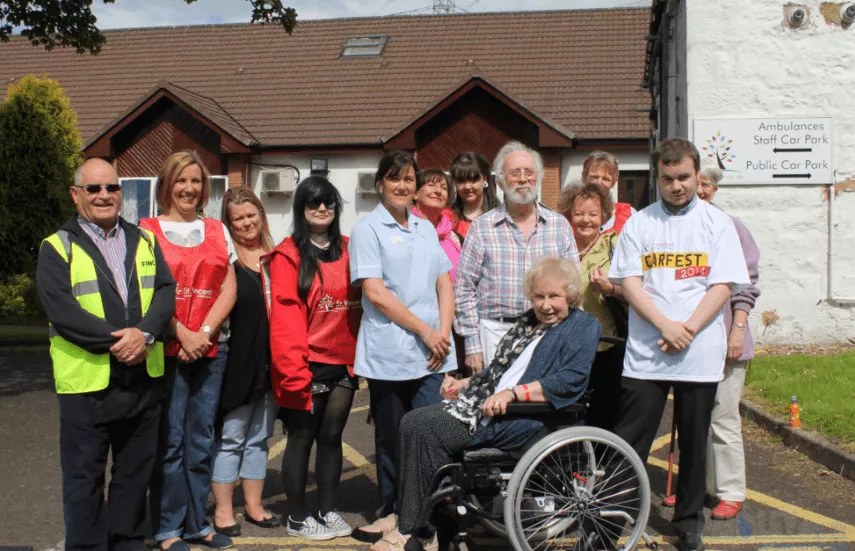
Hospice care Los Angeles is a specialized form of end-of-life medical care that emphasizes comfort and dignity. It provides expert medical care, pain management and emotional and spiritual support. The goal is to achieve the best possible quality of life for patients and their loved ones. When it comes to deciding on hospice, there are many things to consider.
What Is Hospice?
Hospice care los angeles is care that helps people with a life-limiting illness die with dignity and peace. Patients can be cared for at home, in a nursing or long-term care facility, or in an assisted living environment. Hospice care is a specialty form of medical care that provides specialized pain and symptom management, emotional support, and spiritual care. It’s tailored to the patient and family’s wishes. Generally, hospice is provided when a person has a life expectancy of less than six months. Medicare and most private insurances will pay for hospice.
The word “hospice” comes from the Greek term for “home.” Today, many hospices are located in home care settings that provide end-of-life care. These can be independent businesses, or they can be part of a nursing or long-term care facility. A hospice team of doctors, nurses, therapists, and other specialists work together to help your loved one. They’ll visit regularly to help control symptoms and answer your questions. They’ll also be on call 24 hours a day to respond to your loved one’s needs.
What Is Palliative Care?
Palliative care is a type of care that can help people who have cancer or other serious illnesses live better. It focuses on relieving pain and other symptoms, and meeting the emotional, social and practical needs of patients and their families. It can be given at any stage of the disease process, right after diagnosis and during treatment, and throughout follow-up and at the end of life. It can be given by a team of doctors, nurses and other health professionals.
A palliative care program can be provided at a hospital, home or in a hospice facility. It’s a type of medical care that can be provided at any point in the course of an illness, but it usually starts at the first stage when the patient is having symptoms. At this point, the doctor or team may decide to stop the other treatments for your condition and focus on symptom management and emotional support. During this stage, the doctor or team will also address any additional medical issues you’re having.
How Is Hospice Care Covered?
When a patient is diagnosed with a terminal illness and has a life expectancy of six months or less, hospice care is available. It is a special kind of palliative care that does not aim to cure the illness but to relieve pain and other symptoms while also providing emotional support and spiritual counseling. Many work-based or private insurance plans cover at least some of the cost of hospice care. Medicare Part A and Part B are the most common sources of hospice coverage, but Medi-Cal and TRICARE (health benefits program for military personnel) may also provide assistance.
Hospice care los angeles is usually provided in the patient’s home or a residential facility like an assisted living or nursing home. But if a patient needs to be in a hospital, he or she can receive hospice care there, too.
How Can I Pay For Hospice Care?
Hospice care is generally paid for by Medicare and Medi-Cal, but private insurance may also be available. Each hospice has a financial specialist who can answer your questions. For patients who do not have health insurance, we accept charitable donations. This allows families to focus on their loved one’s needs during this time of crisis.
The hospice interdisciplinary group develops an individualized written plan of care that meets each patient’s individual needs. This plan covers everything from pain and symptom management to emotional support for family members and caregivers. Continuous home care: A day the patient elects to get hospice care at home and receives hospice aide, homemaker services or both on a continuous basis. This level of care includes room and board costs.
Conclusion
Inpatient respite care: A day the patient elects to have hospice care in an approved inpatient facility for up to 5 consecutive days to give their caregiver a rest. This level of care includes medically necessary resuscitation and intensive pain and symptom control, which can’t be provided in other settings. The goal is to stabilize the patient so that they can return home to routine hospice care.
Related posts:

Categories
- Apps (1)
- Automotive (23)
- Beauty (7)
- Business (118)
- Celebrities (2)
- Digital Marketing (21)
- Ecommerce (1)
- Education (18)
- Entertainment (25)
- Events (6)
- Features (4)
- Fitness (10)
- Food (2)
- Forex & Crypto (21)
- General (105)
- Health (48)
- House (61)
- Lifestyle (48)
- Marketing (8)
- Parenting (3)
- Pets (10)
- Real Estate (7)
- Safety and Security (11)
- Social Media (20)
- Sports (104)
- Technology (67)
- Travel (22)



















